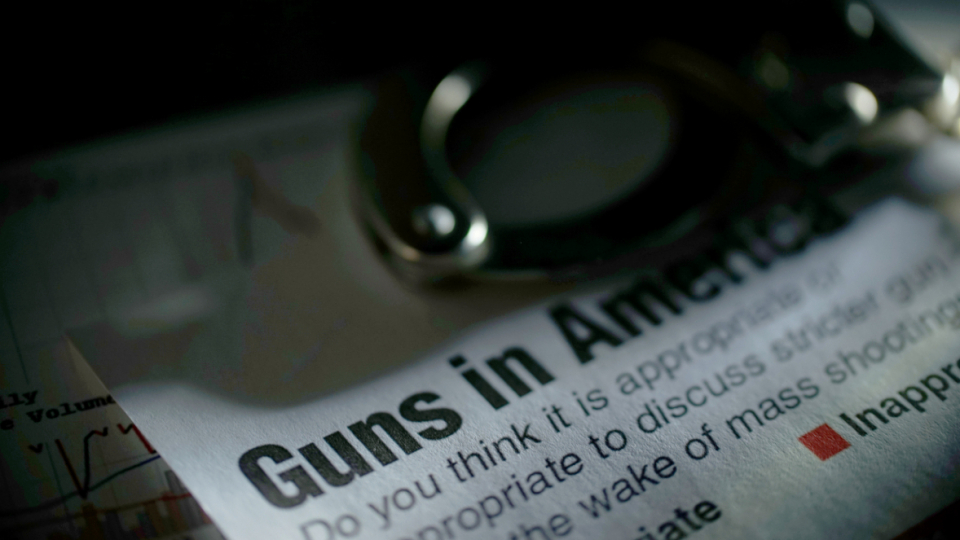November's horrific mass shooting at an LGBTQ+ nightclub in Colorado Springs, CO left five victims dead, 18 injured by gunfire, four by other means, and 12 who police have identified as "victims [who] were not physically injured." And as dire as these numbers are, they can't begin to factor in the trauma now carried by everyone who was at Club Q that night, the victims' loved ones, and entire communities who must today grieve because a 22-year-old opened fire as people danced.
The near-constant nature of such horrors in this country has long since birthed a series of responses as predictable as they are inefficacious: "thoughts and prayers," calls for even greater laxity in our gun laws, and demands for increased police numbers and funding.
Such appeals are rooted in the widely-held belief that "the only way to stop a bad guy with a gun is a good guy with a gun" but the facts themselves belie the very notion. Indeed, the presence of so-called "good guys with guns" all-too-frequently fails to prevent such tragedies or actively increases the danger of the moment—even when the people with the guns are trained, armed, and depended upon to provide public safety.
Three hundred and seventy-six heavily armed officers stood by as 19 fourth-graders were slaughtered in Uvalde, TX in May, even as two teachers died trying to save them. Law enforcement was present all along the Fourth of July parade route in Highland Park, IL when seven people were gunned down. Officers arrived within four minutes of a gunman opening fire at a Virginia Walmart on the day before Thanksgiving 2022, but by then, he'd already killed six victims and himself. And who stopped the Club Q shooter? An unarmed army veteran, with an assist from a trans woman who stomped on the gunman's head with her high heels.
In fact, recently gathered data show that fewer than one-third of all active shooters are actually stopped by law enforcement. Moreover, "good guys" with both guns and badges have been responsible for dozens of friendly-fire deaths of their fellow officers, and the other "good guys with guns"—security guards or bystanders—are frequently killed by police arriving on the scene. In fact, in the last seven years alone, police officers have shot and killed more than 8,000 people in this country.
Public safety is about much more than a single statistic, but let's start with this one: The United States buries more than 45,000 firearm victims every year. More than half of these are deaths by suicide, more than 800 women killed by intimate partners. One million women report surviving being shot at by their partners.
Each life cut short, every grieving family, every recovering survivor, and each fresh layer of communal trauma is a stark indictment of the nation's public safety systems, writ large. Calls for bigger police budgets, more officers, and yet more deadly weapons are the logical conclusion of a culture fixated on systems of violence, but in the face of such horror, we must begin to understand that true public safety is far broader, much more complex, and fundamentally different from throwing yet more armed people at problems a gun cannot solve.
Consider, for example, the Denver Police Department: One Sunday morning in the summer of 2022, officers opened fire on a man they reported to be holding a gun—ultimately injuring him and five bystanders. Consider the ten Chicagoans killed and more than 60 wounded on the same holiday weekend as the shooting in suburban Highland Park—despite already heavy-handed policing of their primarily Black and Brown communities. Consider all the people who were doing nothing at all to warrant any kind of police intervention but who were, nonetheless, shot dead—Breonna Taylor, at home and asleep, Philando Castile, out driving with his family, Aiyana MoNay Stanley-Jones, just seven years old—the list is seemingly endless.
The people of this country, most especially Black and Brown people, have already seen that "good guys with guns" cannot solve our manifold public safety issues. Bloated police budgets cannot provide the healthcare, psychological support, and mental health services needed by communities living with generational trauma. They cannot reverse decades of disinvestment in vulnerable Black and Brown communities. They cannot meet the needs of the homeless, domestic abuse survivors, or people considering suicide. In fact, dozens of people considering suicide are killed every year by the officers sent to help them.
Rigorous data science has shown, however, that when we fundamentally reimagine what public safety entails, acknowledge the damage caused by existing systems, and empower those most harmed by the status quo, public safety outcomes improve.
Genuine public safety requires solutions that are complex, community-led, and informed by science. If we are to build better systems of response, we must train our focus away from long-held ideas that center violence as a solution, and center, instead, the voices of those living with these challenges.
We must also grapple honestly with the fact that so much of the nation's thinking around public safety, not least the "good guy with a gun" narrative, often serves as cover for a deeply held belief that Black and Brown folks need to be violently policed.
The evidence has shown that the "good guy with a gun" narrative is not just fiction but actively jeopardizes public safety. Genuine public safety, on the other hand, no matter how complicated, is within our grasp, should we choose to follow the science.

